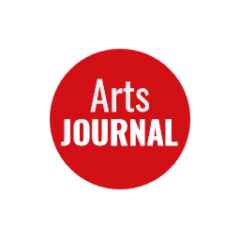The artists were sharing a wall at an exhibition when they realized they had something in common – the tragic loss of two friends. Soon, they shared both life and art as well. – Los Angeles Times
Author: ArtsJournal2
New Stressor: Pandemic Holiday Cards
Seriously – both the greeting card companies and the writers have a lot to figure out in striking a tone for this very different year. – The New York Times
The Vanished Botticelli In The Middle Of Lawsuits, Tax Havens, And A Multi-Country Investigation
Who owns the 1485 Madonna and Child? And, perhaps more importantly for art lovers, where is the painting? The tale is long, twisty, and intensely shady. – The Observer (UK)
Theatres That Were Already Working On Flexibility Have The Advantage Now
As Atlanta’s Alliance Theatre director of development Jamie Clements notes, “Patrons tend to fall on a continuum between wanting fixed seats and wanting options; providing a flexible membership opened the door to those on the continuum looking for the ability to adjust.” And, obviously, 2020 demands the utmost flexibility from theatres and their patrons. – American Theatre
Ugly New Buildings Keep Going Up, And Up, And Up Some More
Rowan Moore found evidence of ugly buildings not only in the UK, but across the world. Why? Modern construction streamlining, perhaps. “It’s not that you can’t design good buildings with modern techniques, but it takes skill and thought. It also takes a degree of influence over detail that modern building contracts, which tend to empower contractors to do what they like, often deny to architects.” – The Observer (UK)
Rome’s Infamous Graffiti Artist Is No Longer Anonymous
And Geco isn’t seen with the same, let’s call it reverence, that many give Banksy. Rome’s mayor, Virginia Raggi: “‘He has soiled hundreds of walls and buildings in Rome and other European cities, which had to be cleaned using public funds.’ She posted a photo of ‘hundreds of spray paint cans, thousands of stickers,’ and other tricks of the trade that she said investigators had confiscated from the apartment of Rome’s most-wanted graffiti painter.” – The New York Times
An Obama May Save Bookstores, Again
At least that’s the hope of many U.S. booksellers – that the 44th president’s memoir will juice sales in a way that will help offset pandemic losses. “Demand among American customers is so high that Penguin Random House, Crown’s parent company, has printed 1.5 million copies in Germany to bring over on cargo ships.” – The New York Times
The Pandemic Has Leveled The Playing Field For Smaller Theatres
How did a theatre in West Yorkshire get Derek Jacobi, Stephen Fry, Alfred Enoch, Rebecca Front, Celia Imrie and Griff Rhys Jones? Well, streaming makes some things a little easier. It even snagged a review in The New York Times. And it’s not alone: “With live performances either difficult or impossible since March, many other agile theatre-makers have also been experimenting with recorded audio and video works that blur the traditional boundaries.” – BBC
The Horse As Witness And Metaphor
Deborah Butterfield’s various horse sculptures have the kind of power that can truly only come from years of history and metaphor. And the artist is aware of all of it. They’re represented the artist/gallery relationship, the idea of male dominion over the earth, and more. Now, she says, “they represent what is/was wonderful about our earth — what we haven’t ruined yet.” – Glasstire
Considering Alexander Hamilton’s Legal World, And The World Of The Musical
“Hamilton’s life in ‘musical-theater land,’ as Miranda cast it, and Hamilton’s reincarnation in legal-literature land, as Tucker framed it, remind us that where we stand determines what we see. Perspectives change. As they do, so does our understanding of history.” – Washington Post
